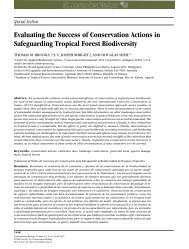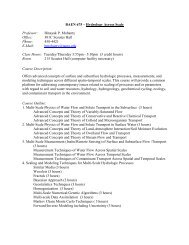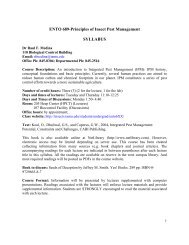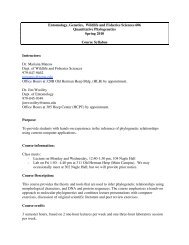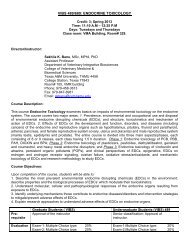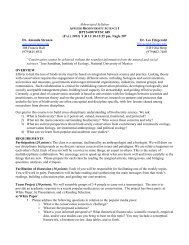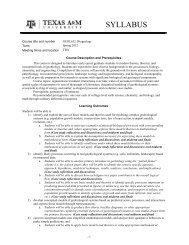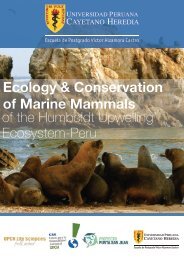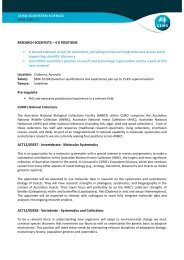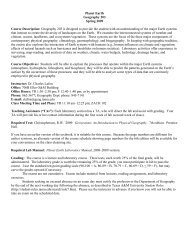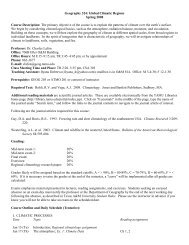syllabus - Ecology and Evolutionary Biology - Texas A&M University
syllabus - Ecology and Evolutionary Biology - Texas A&M University
syllabus - Ecology and Evolutionary Biology - Texas A&M University
You also want an ePaper? Increase the reach of your titles
YUMPU automatically turns print PDFs into web optimized ePapers that Google loves.
Academic Integrity<br />
For additional information please visit: http://www.tamu.edu/aggiehonor<br />
“An Aggie does not lie, cheat, or steal, or tolerate those who do.”<br />
Academic Integrity: It is the responsibility of students <strong>and</strong> instructors to help maintain scholastic integrity<br />
at <strong>Texas</strong> A&M <strong>University</strong> by refusing to participate in or tolerate scholastic dishonesty. Commission of<br />
any of the following acts shall constitute scholastic dishonesty: inappropriately acquiring information,<br />
inappropriately providing information, plagiarism, conspiracy to cheat, fabrication of information, <strong>and</strong><br />
violation of departmental or college rules. This listing is not exclusive of any other acts that may<br />
reasonably be said to constitute scholastic dishonesty. Punishments for scholastic dishonesty may<br />
include the following: appropriate grade penalty up to <strong>and</strong> including an F in the course, letter of<br />
reprim<strong>and</strong>, conduct probation, expulsion, dismissal, or suspension. See the <strong>Texas</strong> A&M <strong>University</strong><br />
Student Rules (the source of this blurb) for a more complete statement on the definition <strong>and</strong> possible<br />
consequences of academic dishonesty. More information can also be obtained from Student Conflict<br />
Resolution Services (http://studentlife.tamu.edu/scrs/).<br />
Copyright <strong>and</strong> Plagiarism Policy: All materials used in this class are copyrighted. These materials<br />
include but are not limited to syllabi, quizzes, exams, lab problems, in-class materials, review sheets,<br />
<strong>and</strong> additional problem sets. Because these materials are copyrighted, you do not have the right to copy<br />
the h<strong>and</strong>outs, unless permission is expressly granted.<br />
As commonly defined, plagiarism consists of passing off as one's own the ideas, words, writings,<br />
etc., which belong to another. In accordance with this definition, you are committing plagiarism if you<br />
copy the work of another person <strong>and</strong> turn it in as your own, even if you should have the permission of<br />
that person. Plagiarism is one of the worst academic sins, for the plagiarist destroys the trust among<br />
colleagues without which research cannot be safely communicated.<br />
If you have any questions regarding plagiarism, please consult the latest issue of the <strong>Texas</strong> A&M<br />
<strong>University</strong> Student Rules, http://student-rules.tamu.edu/, under the section "Scholastic Dishonesty."



